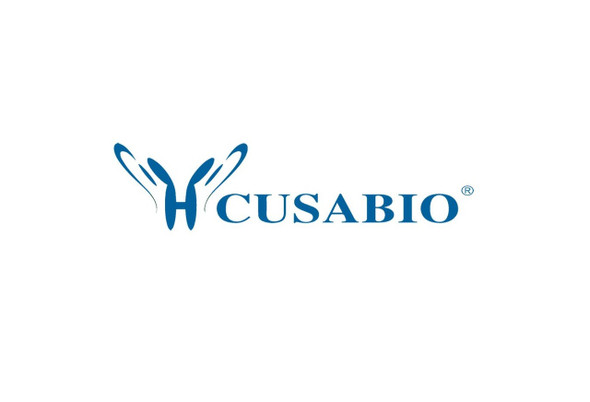Cusabio Virus & Bacteria Recombinants
Recombinant Apis mellifera Major royal jelly protein 1 (MRJP1) | CSB-BP522725DNK
- SKU:
- CSB-BP522725DNK
- Availability:
- 3 - 7 Working Days
Description
Recombinant Apis mellifera Major royal jelly protein 1 (MRJP1) | CSB-BP522725DNK | Cusabio
Alternative Name(s): 56-KDA protein 4
Gene Names: MRJP1
Research Areas: Others
Organism: Apis mellifera (Honeybee)
AA Sequence: NILRGESLNKSLPILHEWKFFDYDFGSDERRQDAILSGEYDYKNNYPSDIDQWHDKIFVTMLRYNGVPSSLNVISKKVGDGGPLLQPYPDWSFAKYDDCSGIVSASKLAIDKCDRLWVLDSGLVNNTQPMCSPKLLTFDLTTSQLLKQVEIPHDVAVNATTGKGRLSSLAVQSLDCNTNSDTMVYIADEKGEGLIVYHNSDDSFHRLTSNTFDYDPKFTKMTIDGESYTAQDGISGMALSPMTNNLYYSPVASTSLYYVNTEQFRTSDYQQNDIHYEGVQNILDTQSSAKVVSKSGVLFFGLVGDSALGCWNEHRTLERHNIRTVAQSDETLQMIASMKIKEALPHVPIFDRYINREYILVLSNKMQKMVNNDFNFDDVNFRIMNANVNELILNTRCENPDNDRTPFKISIHL
Source: Baculovirus
Tag Info: N-terminal 10xHis-tagged
Expression Region: 20-432aa
Sequence Info: Full Length of Mature Protein
MW: 49.4 kDa
Purity: Greater than 85% as determined by SDS-PAGE.
Relevance: Major royal jelly protein 1: induces the differentiation of honeybee larvae into queens through an Egfr-mediated signaling pathway. Promotes body size increase by activating p70 S6 kinase, stimulates ovary development by augmenting the titer of vitellogenin (Vg) and juvenile hormone, and reduces developmental time by increasing the activity of mitogen-activated protein kinase and inducing the 20-hydroxyecdysone protein (20E). Most abundant protein found in the royal jelly which is the food of the queen honey bee larva. The royal jelly determines the development of the young larvae and is responsible for the high reproductive ability of the honeybee queen. Jellein-1: has antibacterial activity against the Gram-positive bacteria S.aureus ATCC 6535, S.saprophyticus and B.subtilis CCT2471, and the Gram-negative bacteria E.coli CCT1371, E.cloacae ATCC 23355, K.pneumoniae ATCC 13883 and P.aeruginosa ATCC 27853, and antifungal activity against C.albicans. Lack cytolytic activity and does not induce rat peritoneal mast cell degranulation. Jellein-2: has antibacterial activity against the Gram-positive bacteria S.aureus ATCC 6535, S.saprophyticus and B.subtilis CCT2471, and the Gram-negative bacteria E.coli CCT1371, E.cloacae ATCC 23355, K.pneumoniae ATCC 13883 and P.aeruginosa ATCC 27853, and antifungal activity against C.albicans. Lack cytolytic activity and does not induce rat peritoneal mast cell degranulation. Jellein-4: lacks antibacterial and antifungal activity. Lacks cytolytic activity and does not induce rat peritoneal mast cell degranulation.
Reference: "Change in the mode of gene expression of the hypopharyngeal gland cells with an age-dependent role change of the worker honeybee Apis mellifera L." Ohashi K., Natori S., Kubo T. Eur. J. Biochem. 249:797-802(1997)
Storage: The shelf life is related to many factors, storage state, buffer ingredients, storage temperature and the stability of the protein itself. Generally, the shelf life of liquid form is 6 months at -20?/-80?. The shelf life of lyophilized form is 12 months at -20?/-80?.
Notes: Repeated freezing and thawing is not recommended. Store working aliquots at 4? for up to one week.
Function: Major royal jelly protein 1
Involvement in disease:
Subcellular Location: Secreted
Protein Families: Major royal jelly protein family
Tissue Specificity: Found in the hypopharyngeal glands of the worker honeybee.
Paythway:
Form: Liquid or Lyophilized powder
Buffer: If the delivery form is liquid, the default storage buffer is Tris/PBS-based buffer, 5%-50% glycerol. If the delivery form is lyophilized powder, the buffer before lyophilization is Tris/PBS-based buffer, 6% Trehalose, pH 8.0.
Reconstitution: We recommend that this vial be briefly centrifuged prior to opening to bring the contents to the bottom. Please reconstitute protein in deionized sterile water to a concentration of 0.1-1.0 mg/mL.We recommend to add 5-50% of glycerol (final concentration) and aliquot for long-term storage at -20?/-80?. Our default final concentration of glycerol is 50%. Customers could use it as reference.
Uniprot ID: O18330
HGNC Database Link: N/A
UniGene Database Link: UniGene
KEGG Database Link: KEGG
STRING Database Link: N/A
OMIM Database Link: N/A









